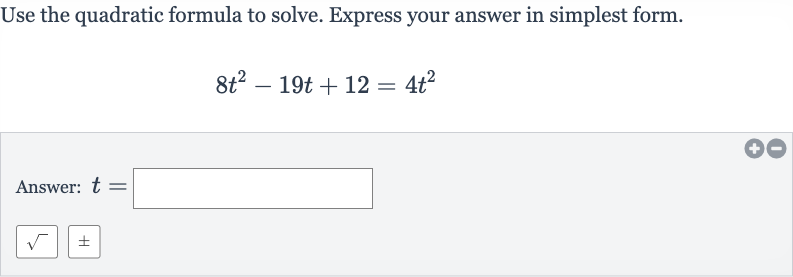AI tutor
Welcome to Bytelearn!
Let’s check out your problem:

Use the quadratic formula to solve. Express your answer in simplest form.Answer:
Full solution
Q. Use the quadratic formula to solve. Express your answer in simplest form.Answer:
- Set Equation to Zero: First, we need to set the equation to zero by subtracting from both sides of the equation.This simplifies to:
- Apply Quadratic Formula: Now we can apply the quadratic formula to solve for . The quadratic formula is given by:where , , and are the coefficients from the quadratic equation .In our equation, , , and .
- Calculate Discriminant: Next, we calculate the discriminant, which is the part under the square root in the quadratic formula: .Discriminant = Discriminant = Discriminant =
- Find Solutions: Since the discriminant is positive, we will have two real solutions. We can now plug the values of , , and the discriminant into the quadratic formula to find the solutions for .
- Two Real Solutions: We will have two solutions, one for the addition and one for the subtraction:
More problems from Composition of linear and quadratic functions: find an equation
QuestionGet tutor help
QuestionGet tutor help
QuestionGet tutor help
QuestionGet tutor help
QuestionGet tutor help
